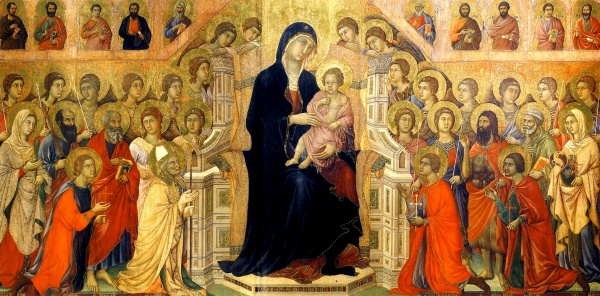Facts About Maestà
The Maestà, also known as the Maestà of Duccio, is an iconic altarpiece created by the artist Duccio di Buoninsegna in 1308 for the city of Siena. This masterpiece is Duccio's most renowned work and consists of numerous individual paintings. The front panels feature an enthroned Madonna and Child, surrounded by saints and angels, accompanied by a predella that depicts scenes from the Childhood of Christ and various prophets. The reverse side is equally captivating, depicting forty-three small scenes that narrate the Life of the Virgin and the Life of Christ.
In 1312, the altarpiece was installed in Siena's cathedral after a grand procession through the city. The central panel, measuring an impressive 7 by 13 feet, was painted on both sides to be viewed from all angles when placed on the main altar. This magnificent piece remained in place until 1711, when it was dismantled and divided between two altars, resulting in the loss or scattering of some sections.
Today, the panels that remain in Siena are displayed in the Duomo museum, where the central panel, lower panels, and rear sections are exhibited separately. Other pieces of the altarpiece have found homes in various museums across Europe and the United States.
Stylistically, the Maestà is notable for its emotional depth, particularly in scenes such as the Deposition and Burial of Christ, which evoke powerful reactions from viewers. While the panels are dispersed, they collectively illustrate various episodes from the Life of Christ and the Life of the Virgin.
The significance of Duccio's Maestà lies in its role in shifting Italian painting away from the rigid Byzantine style towards more realistic and direct representations of reality, thereby influencing the future of Italian art.

 France
France